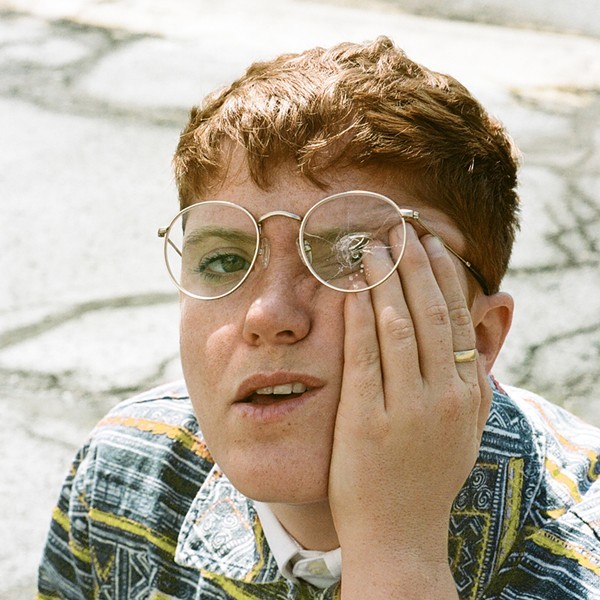“I’ve never been scared like that before, and I’ve never felt more alive.” I’ve been meditating on why audiences flock to see a film like Alex Garland’s Civil War—especially when the scales of our democracy feel more lopsided by the day. Perhaps it’s answers or trying to use art as a crystal ball. Garland gave scant answers about what was happening in his film, which turned off some of the audience. If you make a grand political film, you might as well clearly define what you’re trying to say. There are illusions to the current president’s decision to seize a third term, disbanding the F.B.I., an “Antifa massacre,” and perhaps an unlikely California-Texas alliance, amongst other things. While there might not be uniformity to it all, it’s still a chronicization of the death of a thousand democratic cuts that can serve as a parable for any country, just not ours. What I found so harrowing about this film, despite the political opacity of it all, is what it definitively says about violence and our proximity to it like flies to bright light. At first, it’s blinding and harsh, but once you are bathed in it, there’s an adjustment to its level. In Civil War’s case, I found that to be the most horrifying prospect.
I first saw Civil War during SXSW at the Bullock Texas State History Museum in Austin, Texas, in a giant IMAX theatre. The sound of war, bullets, and conquest was overpowering at times. It felt as jarring as you were alongside these fictitious soldier-led forces and the press with them at every step. Weirdly, your body started to adjust to the loudness of it all, much like the journey that up-and-coming photojournalist Jessie (Cailee Spaeny ) goes through. At the beginning of Civil War, she’s unaware of the cues; she’s tense and jarred by the abudance of death and chaos around her. However, despite seeing colleagues die and possibly meeting her untimely demise herself, there’s a switch that flips inside her. When the siege on the White House happens, she flashes a smile to Joel (Wagner Moura ), fully entrenched inside the adrenaline rush that getting “the shot” potentially promises her. It’s similar to 2022’s Nope and the search that cinematographer Antlers (Michael Wincott) on for “the shot” before he gets eaten by Jean Jacket. Antlers is at the top of his game, and despite those achievements, he’s still looking for that one definite piece of footage despite being in danger. It’s the same thing Otis, Emerald, and even Jupe are searching for in different ways. For Jupe, this extremely traumatic thing happened to him as a child actor, and corralling Jean Jacket as an attraction is a way of getting close to the sun without actually touching it. Capturing the one photo for Otis and Emerald will spring them into notoriety and fame, even if it costs them their lives.

Photo Credit: A24
At the beginning of Civil War, there was talk amongst the journalists that The White House was hostile towards the press—even shooting them on sight. However, it didn’t stop them from pursuing the story because that’s a pillar of how important journalism is. Even if the lines of press freedom start to erode in the United States, you don’t think of journalists being free reign to being shot within America. But Garland’s depiction of America isn’t strictly abiding by these contracts; everything is fair game. That’s where seasoned and award-winning war photographer Lee Smith (Kirsten Dunst) comes in. She’s been through the thick of it around the world. The wariness and routine nature of it all hangs on her demeanor as if she’s numb. I’d imagine being in that job would require some attachment. In the student/teacher dynamic Lee and Jessie have, an energy exchange happens when Jessie acts Lee if she would capture her getting killed. Lee replies, “What do you think?” Those words would boomerang back in reverse at the end, but not before they go through a maturation process. While Jessie flows one way, Lee starts to show restraint. She deletes the pictures of Sammy’s (Stephen McKinley Henderson) body and is even overtaken by the siege on the White House in a way Jessie may have earlier in the film.
Garland presents the audience with two contrasting thoughts when the faithful moment happens. Wouldn’t it have been natural for Jessie to stop after Lee got shot by gunfire? Conversely, has the job captured her emotions so tightly that all that exists is getting the prime photo of the separatists finding the president? That is something Garland does answer with a yes because, in Civil War, violence is the draw. We are exposed to so much of it by the end of the fictitious president’s last plea that we flick it off because it’s not surrender that we came for. The final image is soldiers smiling and posing around the massacre. A particular group of looters disarm from possibly hurting Jessie because Lee offers to take a photo of what they did. In this story, Garland presents cameras almost like artillery, which are tools to capture the unfiltered truth on the ground. But like the homicidal soldier who decided to spring the hometown pop quiz, the weaponry does something to people on the other side of it. It’s almost like Civil War’s relationship to the audience as we debate what this film is, what it’s trying to say (or doesn’t), and the different degrees of impact from person to person. A republic is tearing itself apart in Civil War, and (I’m sure) a million alarm bells rang beforehand. As scattershot as this story can be in the reasoning behind it all, it’s interesting how we race towards a possibility of our future fate, much like these characters do












